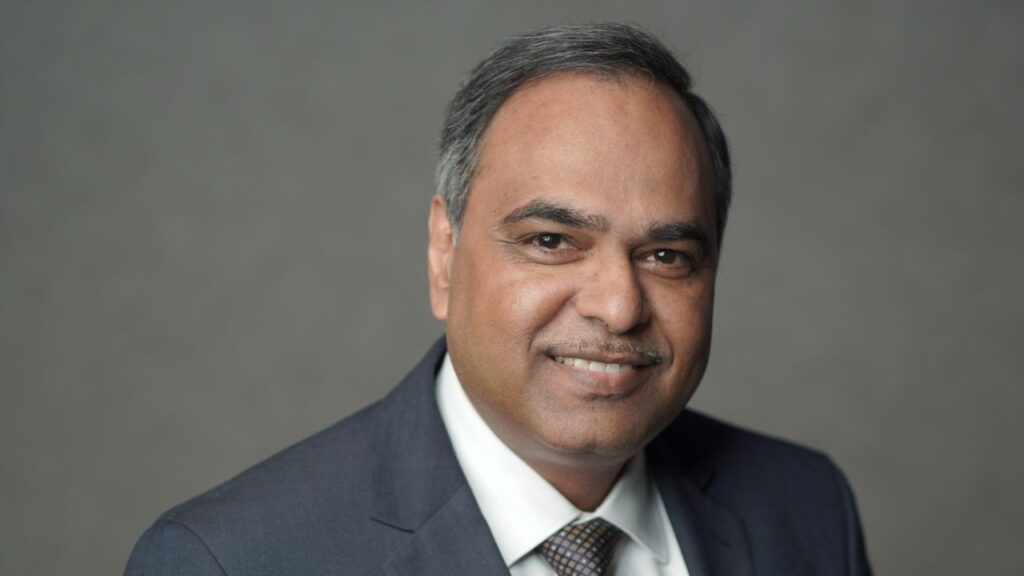1. What’s your leadership mantra in the fast-evolving auto landscape?
In an industry as dynamic and rapidly evolving as automotive, my leadership mantra centers around three core principles: continuous learning, empowering teams, and staying anchored to purpose.
First, I believe learning agility is non-negotiable. With technology, customer expectations, and business undergoing a major transition, it’s critical to stay curious, open-minded, and adaptive. I make it a point to stay close to the ground—to listen, observe, and absorb—because often the best insights come from within the organization and from the customer frontlines.
Second, I firmly believe in giving ownership and enabling decision-making at all levels. In today’s fast-paced environment, no single leader can have all the answers. The best ideas emerge when teams are trusted, empowered, and given the space to experiment and solve problems. My role, then, is to create clarity, remove roadblocks, and support them in delivering outcomes.
Third, I strive to stay anchored to a clear and consistent purpose—whether that’s driving sustainable mobility, building customer trust, or fostering innovation. Amid rapid change, purpose acts as a compass, ensuring that our actions, decisions, and culture remain aligned with our long-term vision.
2. How do you inspire and motivate your team during a challenging time?
Challenging times test not only the resilience of an organization but also the unity and conviction of its people. In such moments, I believe the most important role of a leader is to provide clarity, conviction, and compassion.
First, I focus on clear communication—ensuring the team understands the reality of the situation, the rationale behind decisions, and the larger purpose we are working towards. This builds trust and aligns energy in the right direction.
Second, I focus on creating clarity of purpose and individual ownership. During uncertainty, people are often looking for direction. By breaking down big challenges into actionable goals and giving individuals clear responsibility, we help them regain a sense of control, contribution, and meaning in their work
Third, I make it a priority to recognize small wins, celebrate collective effort, and reinforce belief in the team’s capability to overcome setbacks. Especially during tough times, acknowledging progress—no matter how incremental—builds morale and momentum. These small wins create a snowball effect, fostering a culture of positivity and progress that can gradually shift the mood and drive larger change across the organization.
Ultimately, inspiring a team during tough phases is about aligning everyone to a higher purpose, reinforcing belief in the journey, and standing together through the storm—so we emerge stronger, and more united, on the other side.
3. What’s the next big disruption you foresee in the auto industry?
The Indian automobile industry is at the cusp of its next big disruption, driven by two transformative forces: Electric Vehicles (EVs) and Software-Defined Vehicles (SDVs).
As the urgency around climate change and energy security grows, EVs represent a viable, scalable solution for reducing emissions in the transportation sector. As such, the shift towards EVs is no longer a future possibility—it is a present-day imperative. With rapid advancements in battery technology, charging infrastructure, and supportive government policies, EVs are poised to become mainstream. At Tata Motors, as India’s largest electric four-wheeler manufacturer, we are deeply committed to accelerating this transition—not just by building advanced EVs tailored for Indian consumers, but by enabling an entire ecosystem that supports scalable, future-ready electric mobility.
Software-Defined Vehicles (SDVs), on the other hand, signal a more fundamental shift in the very architecture of vehicles. We are moving towards a world where the car is no longer a static hardware product, but a connected, intelligent gadget on wheels—constantly learning, evolving, and adapting to the user. SDVs enable a highly personalized, intelligent driving experience and open new avenues in safety, connectivity, and convenience. For manufacturers, this shift demands a deep transformation—not just in technology, but in mindset, processes, and customer engagement models.
At Tata Motors, we are actively investing in both these domains, recognizing their potential to shape the future of mobility. As the industry evolves, those who can anticipate and respond to these disruptions with agility and purpose will define the next chapter of automotive innovation.
4. What’s driving Tata Motors’ dominance in India’s EV space, and how will you sustain it?
Tata Motors’ leadership in India’s EV space is the result of a deliberate, early, and sustained commitment to electrification. We effectively kick-started the EV revolution in 2020 by launching an electric vehicle that appealed to mass Indian customers for the first time – with a strong blend of design, technology, power and range – positioning us as category creators in the Indian EV landscape.
Over the past five years, we have built deep customer insights by serving over 2 lakh Tata EV customers who have together driven more than 5 billion kilometers. This has allowed us to continuously refine our offerings and understand what the Indian EV buyer truly needs. Our success is anchored in a robust trifecta:
- Relentless category building, where we’ve worked consistently to raise awareness, build confidence in EVs, and address barriers around range, reliability, and cost of ownership
- A wide product portfolio spanning multiple price points, body styles, enabling us to serve every customer segment
- Ecosystem development to drive charging infrastructure growth, and support development of the indigenous EV supply chain
As India’s largest electric four-wheeler manufacturer, our dominance is also driven by our innovation-led mindset and strong brand equity. But leadership is not just about being first—it’s about staying ahead. We are now focused on delivering a future-ready, globally competitive EV portfolio that is software-rich, customer-centric, and aligned with India’s zero-emission goals. With our continued investment in technology, product innovation, and customer experience, we are confident of sustaining our leadership and helping India transition to a cleaner, greener mobility future.


